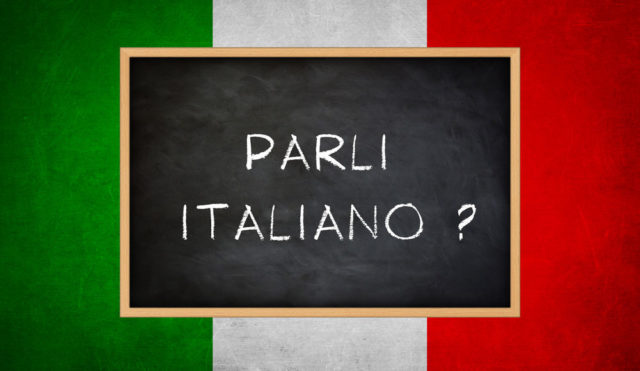“Parla italiano?” I get that question every now and then from readers calling to change an address or pay via credit card. For the longest time, I dreaded it. “No, I’m sorry,” I’d sheepishly reply. The caller would politely switch to English and on we’d go.
Some of them have given me a gentle ribbing. How can the editor of an Italian-American magazine properly do his job with only English in his linguistic toolbox? I get by, but not as well as I might.
In my defense, I came by my handicap honestly enough. My father — who was born to immigrant parents and spoke only Italian until he went to kindergarten —grew up in the shadow of World War II. Back then, Americans of Italian descent were expected to abandon their ancestry as they marched off to war against Italy and the other Axis powers. And even though he regularly spoke Italian to the patients at his dental practice in the old neighborhood, he was resolute about running an English-only household.
With constant exposure over the decades, I had been able to pick up a handful of words and phrases (some of them unfit for print in this or any other publication), but fluency has always been a distant dream.
I even took a stab at learning Italian in a formal setting, taking beginning and intermediate courses in advance of my first trip to Italy a decade ago. What I discovered was a glorious and maddening language awash in vexing complications and exceptions.
Sure, Italian reads like a song, but why on earth would you need seven different definite articles, including two just for words that begin with st, z, pn or ps? And don’t get me started on irregular verbs!
I gamely plugged away for 24 weeks and left for Italy with a head stuffed with vocabulary words and grammatical rules, only to discover that I couldn’t string a sentence together in Italian to save my soul.
After that, I wandered away from the language, and what little knowledge and skills I had acquired evaporated over time. The only lessons that stuck with me were these: 1) You can’t retain a language by attending class once a week and practicing only once or twice between times, and 2) the rules of grammar aren’t the shortest path to fluency.
I was recently brought back into the linguistic fold by Domenico Gambino, who I wrote about last January. “Buon giorno, Paolo! Come stai?” he would say each time we talked. “Well, and you?” I’d respond. “No, no,” he’d urge. “Say, ‘Bene!’ or ‘Non c’è male!’”
Tweaked into action, I signed up for a beginning class on Saturday mornings at the Italian Cultural Center, and this time I’m in it for the long haul.
Luckily, there’s a whole new way of teaching Italian that works in our favor. Our instructor, Anna Clara Ionta, is all about pronunciation and conversation, focusing on the words and phrases we need to navigate day-to-day life in Italy. The rules of grammar are parceled out judiciously and on an as-needed basis. (“That’s how you learn to speak as a child,” la professoressa assures us. “That’s the best way to learn.”)
And I’ve got a whole new approach to my studies. I read out loud from my notes every night, and I rattle off the alphabet, numbers, days of the week, etc. during my morning walks. (My neighbors must think I’ve gone mad!) I’ve even organized my fellow students into a study group, with daily worksheets and practice sessions right before class.
So now, when a reader ask me “Parla italiano?” I can at least say, “Sì, un po’,” with the promise that I’ll know a little more the next time they call.
The above appears in the November 2018 issue of the print version of Fra Noi. Our gorgeous, monthly magazine contains a veritable feast of news and views, profiles and features, entertainment and culture. To subscribe, click here.
 Fra Noi Embrace Your Inner Italian
Fra Noi Embrace Your Inner Italian







